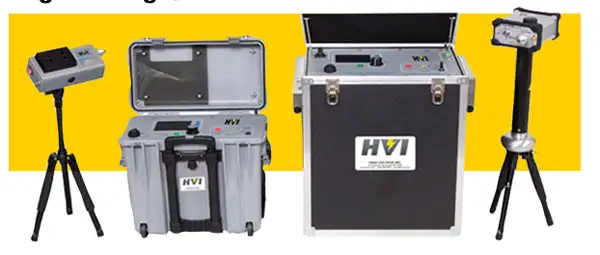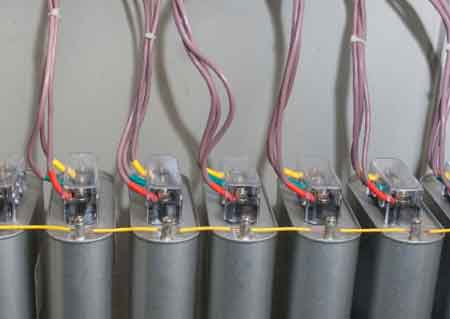Arc Flash Injuries Explained
By R.W. Hurst, Editor

CSA Z462 Arc Flash Training - Electrical Safety Essentials
Our customized live online or in‑person group training can be delivered to your staff at your location.

- Live Online
- 6 hours Instructor-led
- Group Training Available
Download Our OSHA 3875 Fact Sheet – Electrical PPE for Power Industry Workers

- Follow rules for rubber gloves, arc-rated PPE, and inspection procedures
- Learn employer obligations for testing, certification, and training
- Protect workers from arc flash and electrical shock injuries
Arc flash injuries result from sudden electrical explosions, causing burns, hearing loss, and trauma. Proper PPE and safety protocols help reduce risk in industrial environments.
What are "arc flash injuries"?
Arc flash injuries are serious injuries caused by high-energy electrical explosions.
✅ Can cause severe burns, nerve damage, and hearing loss
✅ Often result from poor maintenance or lack of protective gear
✅ Preventable with proper arc flash PPE and safety training
Request a Free Training Quotation
Arc flash injuries are a severe hazard in the electrical industry and can result in devastating consequences for workers who are not adequately protected. An arc flash occurs when electrical energy jumps from an electrical conductor to another conductor or the surrounding air, creating an intense electrical discharge that can cause severe burns, blast injuries, and even fatalities. To understand the full scope of what happens during an incident, see our detailed explanation of the arc blast explosion, which outlines the pressure and thermal effects that cause trauma alongside burns.
Causes of Arc Flash Injuries
Electrical explosions can occur for various reasons, including equipment failure, contact with an energized conductor, or a short circuit. When an arc flash (AF) occurs, the intense heat generated, similar to the surface of the sun, by the electrical discharge can cause electrical equipment to explode, creating a pressure wave that can cause arc blast injuries to workers in the area. In addition, the intense light and heat generated by the AF can also cause burns to the skin and underlying tissues as well as hearing damage. For a clear definition of how electrical discharges result in bodily harm, read our guide on arc flash burn, which discusses how high temperatures instantly damage skin and tissue.
Electricity Today T&D Magazine Subscribe for FREE

- Timely insights from industry experts
- Practical solutions T&D engineers
- Free access to every issue
| Technical Concept | Explanation | Why It Matters |
|---|---|---|
| Incident Energy (cal/cm²) | The amount of thermal energy a worker is exposed to during an arc flash, measured at a working distance. | Determines required PPE level and potential burn severity. |
| Arc Flash Boundary | The distance from an arc source within which a person could receive a second-degree burn without PPE. | Helps define approach limits and signage placement. |
| IEEE 1584 Standard | A standard developed by the IEEE to provide methods for calculating arc flash incident energy based on system parameters. | Ensures consistent and accurate arc flash risk assessments across installations. |
| Working Distance | The distance between a worker’s body and the potential arc source, typically assumed to be 18 inches for low-voltage systems. | A key input in incident energy calculations. |
| System Parameters | Includes voltage, fault current, clearing time, and electrode configuration—all used in arc flash modeling equations. | Accurate data ensures reliable calculation and effective protective labeling. |
Effects of Arc Flash Injuries
The effects of arc flash injuries can be both physical and psychological. Burns are the most common injury associated with AF occurrences and can require extensive medical treatment and rehabilitation. Blast injuries can cause damage to the ears, eyes, and other organs and cause physical trauma, such as fractures or concussions. Additionally, the loud noise generated by an AF can cause temporary or permanent hearing loss, and the intense light can result in temporary or permanent vision loss. Workers who have experienced an electrical explosion may also have PTSD, which can cause anxiety, depression, and other psychological symptoms. Injuries are often made worse when workers are not outfitted with the right gear, so it's critical to follow the arc flash PPE requirements for each hazard category.
Emergency Response
In the event of an arc flash incident, knowing how to respond swiftly and safely can make the difference between life and death. The first and most critical step is not to touch the victim if they are still in contact with energized equipment—doing so could result in a secondary injury. If it is safe to do so, immediately shut down the power source to eliminate the electrical hazard. Once the area is safe, call emergency medical services (EMS) without delay. If the victim has sustained burns, cool the affected area with clean, cool water—never use ice or ointments—and cover the burns with a sterile, non-adhesive bandage to prevent infection. Do not remove burned clothing unless it is smoldering or restricting breathing. If the person is unconscious, check for breathing and begin CPR if necessary. Having a clearly defined arc flash emergency response plan and ensuring all employees are trained to follow it is essential for reducing the severity of injuries and potentially saving lives.
Preventing Arc Flash Injuries
Arc flash injuries are preventable when proper safety measures are in place. The National Fire Protection Association (NFPA) has developed standards for electrical safety in the workplace, including NFPA 70E, which outlines best practices for preventing arc flash (AF) incidents. These standards include conducting hazard analyses to identify potential hazards, using appropriate personal protective equipment (PPE), including labels on electrical equipment, and following established electrical safety procedures to minimize the risks of arc flash (AF) incidents. Proper risk mitigation begins with a comprehensive arc flash hazard analysis to evaluate equipment conditions and determine exposure levels.
Proper training is also essential for preventing injuries. Workers trained in electrical safety procedures and the proper use of PPE are better equipped to identify potential hazards and take the necessary precautions to protect themselves and others from harm. It is also essential for employers to properly design their electrical systems (which include phase arc and phase to ground devices such as circuit breakers and other arcing fault devices, such as protective devices) and ensure that their employees are physically protected from electrical explosions.
Arc flash injuries are a significant safety concern in the electrical industry and can have devastating consequences for workers who are not properly protected. The best protection against AF incidents is for employers and workers to agree not to work on energized electrical equipment. Then, with proper safety measures and training in place, employers can minimize the risks of incidents and ensure the safety of their workers. Remember, accidents are preventable; taking the necessary precautions can save lives and prevent lifelong injuries. Many workplace accidents are traced back to poor practices—learn more about the 10 most common errors in arc flash analysis so you can avoid the oversights that often lead to injuries.
Test Your Knowledge About Arc Flash!
Think you know Arc Flash? Take our quick, interactive quiz and test your knowledge in minutes.
- Instantly see your results and score
- Identify strengths and areas for improvement
- Challenge yourself on real-world electrical topics
Visit Our CSA Z462 Arc Flash Training Course Page
Arc Flash Injuries
An AF is a hazardous electrical event that can cause serious injuries or even fatalities. The intense heat, pressure, and sound waves created by the electrical discharge can cause injuries. Injuries can be both physical and psychological, and they can be either permanent or temporary. Here are some common types of injuries:
Burns are the most common type of injury associated with AF incidents. The intense heat generated can cause severe burns to the skin and underlying tissues, often requiring extensive medical treatment and rehabilitation.
Blast Injuries: Blast injuries are caused by the pressure wave created by the AF. Molten metal travels through the air and causes lung damage from flying debris. These injuries can cause damage to the ears, eyes, and other organs, as well as physical trauma such as fractures or concussions.
Hearing Loss: The loud noise generated by an AF can cause temporary or permanent hearing loss, even if ear protection is worn.
Vision Loss: The intense light generated can cause temporary or permanent vision loss. This is why it is essential to wear proper eye protection when working on or near electrical equipment.
Post-Traumatic Stress Disorder (PTSD): Workers who have experienced an explosion may have PTSD, which can cause anxiety, depression, and other psychological symptoms.
Fatalities: In some cases, AF events can result in fatalities. The intense heat, pressure, and sound waves generated by the flash and shock hazards can be fatal, and workers who survive an incident may suffer permanent injuries or disabilities.
It is important to note that not all incidents result in injuries, and the severity of injuries can vary widely depending on the circumstances of the event. To prevent accidents, it is essential to follow proper electrical safety procedures, conduct thorough hazard analyses, and utilize appropriate personal protective equipment, including labels on electrical equipment.
Related Articles:












